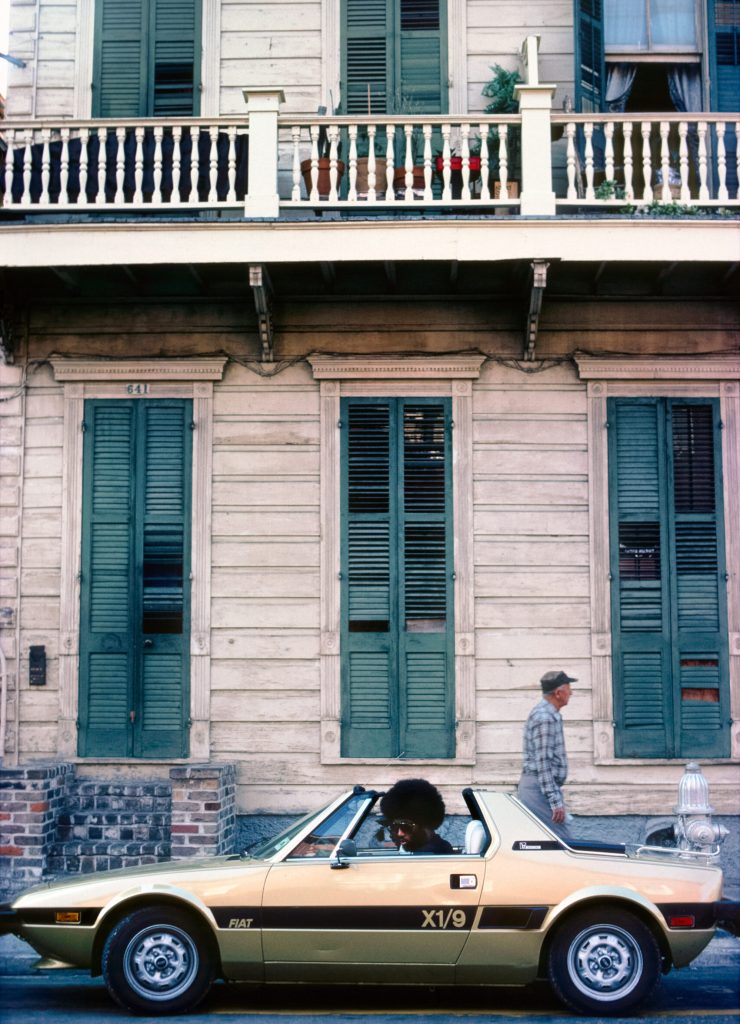Did you know that nearly 60 percent of Fiat’s X1/9 production was claimed by the U.S. market? Despite its popularity both in America and in its home country, Italy, few fully understand how (or why) this model name came to be. You can learn more about the car itself here. Our investigation today is all about the X1/9 name itself. And if the nomenclature has always seemed a bit cryptic, well, that’s by design.
The name has its roots in Fiat’s project code convention – an internal numbering scheme that originated in 1946, when the company was establishing its postwar development strategy. Seeking to bring order to the ad hoc numbering of various models and designs, technical director Dante Giacosa determined that new vehicles would be identified by a three-digit number: 1 for cars, 2 for trucks, 3 for intercity buses, and 4 for urban buses. Later on, the number 5 was assigned to farm tractors and 6 to engines for special applications.


How exactly Fiat kept numerical track of its passenger car projects remained opaque to the outside world in the years that followed, but that changed with the arrival of the 124 family sedan. Launched in the spring of 1966 and elected European Car Of The Year for ’67, the Fiat 124 bore the very same commercial name as its original project code, inaugurating a practice the Italian company would follow for more than a decade, save for a few market-specific exceptions.
An unintended consequence of this continuity was that it telegraphed Fiat product development strategy. Once magazine journalists hunting for juicy new-product and test-prototype details got wind of one or more numbers in the product code, they could guess what Fiat was up to with relative ease, much to Giacosa’s annoyance. Fiat’s own marketing department suddenly had the same decoder tool. The division was often willing to step onto the technical department’s turf and influence product development, which must have been even more frustrating for Giacosa than journalists’ and onlookers’ unwanted attention.

So, in an attempt to confuse both camps, Giacosa resorted to the not-so-original idea of referring to future projects with the letter “X.” In his seminal autobiography from 1979, titled “I miei 40 anni di progettazione alla Fiat” (“My 40 years of design at Fiat”), Giacosa admits that inspiration for this approach came from Provslav Rakovic, the general manager of Yugoslavia’s Zàstava factory, home of Fiat models under license since 1954.
Rakovic used the letter “X” when discussing future models, and Giacosa began to call new engine projects “X0,” new car projects “X1,” and new trucks “X2.” The project “X1/1” eventually resulted in the Fiat 128 – the marque’s influential front-wheel-drive family sedan launched in 1969. The Autobianchi A112 (project “X1/2”) debuted that same year, along with the Fiat 130 flagship sedan (project “X1/3”), while the “X1/4” arrived in 1971 as the Fiat 127, the last project directly overseen by Giacosa before he reached the age of mandatory retirement.


Following Dante Giacosa’s departure (Fiat nonetheless retained his services as a consultant well into the 1980s), the use of “X” codes continued but became increasingly haphazard as the years went by. It’s worth pointing out that these “X” codes never entirely replaced the prior three-digit numbering system. Used early into a project’s run, the “X” code usually got replaced by a three-digit number as the vehicle moved closer to production.
Pinpointing precisely the moment in time when Fiat abandoned this practice for good may not even be possible. We Italians are much better at building things than keeping track of them, so I wasn’t surprised when Fiat’s historical archives couldn’t give a conclusive answer to my inquiry about “X” codes; a proper list of them doesn’t appear to exist and likely never did. However, period material suggests that production car projects were still issued “X” codes at least until the 1978 Ritmo hatchback, whose development began under the “X1/38” moniker before that was replaced by the “138” project number.
Beyond that, material evidence suggests that “X” codes were, albeit intermittently, still employed years later for advanced prototypes designed by Fiat’s research branch, known as Centro Ricerche Fiat. The fantastic Stellantis Heritage Hub collection in Turin even includes an intriguing CRF prototype for a highly fuel-efficient small car from the 1980s identified as “X1/75,” which is the highest code I’m aware of.
Ultimately, the X1/9 remains the only Fiat model whose “X” project code became a commercial name. Perhaps that outcome shouldn’t be all that surprising; although it suited the model’s exotic mid-engine layout, angular style, and technical advancement, the name was also kind of a mouthful. Especially when pronounced in Italian. Alas, now, next time you spot an X1/9 at a cars and coffee, you’ll know it owes its peculiar name to an unwitting engineer from socialist Yugoslavia and the shrewdness of Italian motoring journalists.









I owned 4 of them! I drove one from North East England to Italy, a fun car it like a gokart descending in the Alps.
It reminded me of my youth. We think this photo was taken in 1982 ? .
First car I purchased with my girlfriend Tessa. It was faster than the 1500cc model which apparently was the same bore but increased stroke length. Many happy memories
(Image sent in separate email)